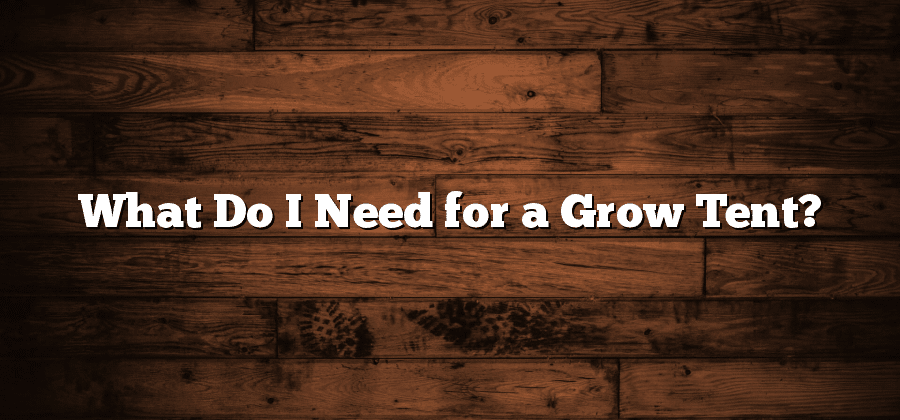Selecting the Right Size Grow Tent
When it comes to selecting the right size grow tent for your indoor gardening needs, it’s important to consider a few key factors. First and foremost, you’ll want to determine how much space you have available in your home or growing area. Measure the dimensions of the area you plan to set up your grow tent in, taking into account any height restrictions as well. This will give you a baseline idea of the maximum size of the grow tent you can accommodate.
Next, it’s essential to think about the number and size of plants you plan to grow. Different plants require different amounts of space to thrive, so it’s crucial to find a grow tent that can provide adequate room for your specific plants. Consider their potential height and spread as they grow, and factor in enough space for proper airflow and light distribution. Remember, overcrowding can lead to poor air circulation and increased risk of disease or pests, so it’s always better to err on the side of a slightly larger tent if you’re unsure.
Essential Grow Tent Components
When setting up a grow tent, it is essential to carefully choose the components that will maximize your plants’ growth and yield. One of the most important components is the tent itself. Opt for a tent that is made of durable materials such as thick canvas or heavy-duty nylon. Ensure that it is lightproof to prevent any light leaks that could disrupt your plants’ light cycle. Additionally, consider the size of the tent, ensuring that it has enough space for your plants to grow comfortably.
Another crucial component of a grow tent is the reflective material that lines the interior. This material helps to distribute and reflect light evenly throughout the tent, maximizing the amount of light that reaches your plants. Look for tents that have a high-quality reflective material such as Mylar or diamond-patterned reflective lining. This will ensure that your plants receive optimal light coverage, resulting in healthier and more vigorous growth.
Choosing the Ideal Lighting System
When it comes to selecting the ideal lighting system for your indoor garden, there are several factors to consider. First and foremost, you need to determine the type of plants you will be growing and their specific lighting requirements. Different plants have varying needs when it comes to light intensity, spectrum, and duration. Conducting thorough research on the lighting needs of your chosen plants will ensure that you provide them with the best growing conditions possible.
Another crucial consideration is the size of your grow tent or indoor space. The lighting system you select should be able to cover the entire area evenly, providing sufficient light to all your plants. It’s important to calculate the recommended light output for your specific square footage to avoid under or over-lighting your plants. Additionally, you should take into account the potential growth and expansion of your garden, as this may require you to invest in a more powerful lighting system in the long run. By carefully considering the needs of your plants and the size of your growing area, you can choose the ideal lighting system that will promote healthy and vigorous growth.
Ventilation and Air Circulation Needs
Optimal ventilation and air circulation are crucial factors to consider when setting up your indoor grow tent. Without proper airflow, your plants may suffer from decreased growth rates and increased susceptibility to pests and diseases. Therefore, it is essential to understand the needs and requirements of your specific plant species to create the most favorable environment for their growth.
To ensure adequate ventilation, it is recommended to invest in a high-quality inline fan and carbon filter system. These components work together to remove stale air and odors from the tent, replacing them with fresh, clean air. The inline fan also helps regulate the temperature and humidity levels within the tent, preventing any potential issues caused by stagnant air. Additionally, incorporating oscillating fans inside the tent can improve air circulation, ensuring that carbon dioxide and oxygen are evenly distributed among your plants’ foliage.
Remember, every plant has unique ventilation and air circulation needs, dependent on factors such as their size, growth stage, and preferred climate. By carefully monitoring and adjusting these conditions, you can create an optimal environment that promotes healthy and robust plant growth.






